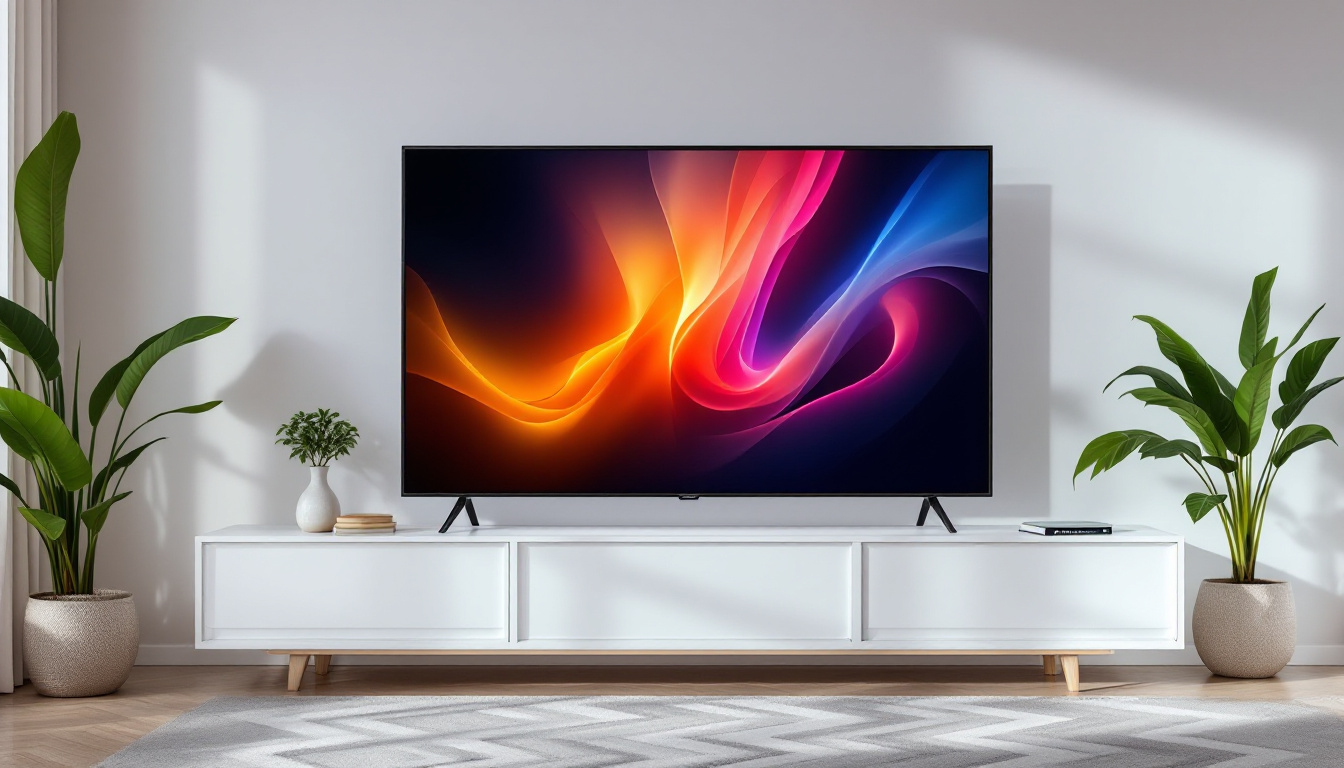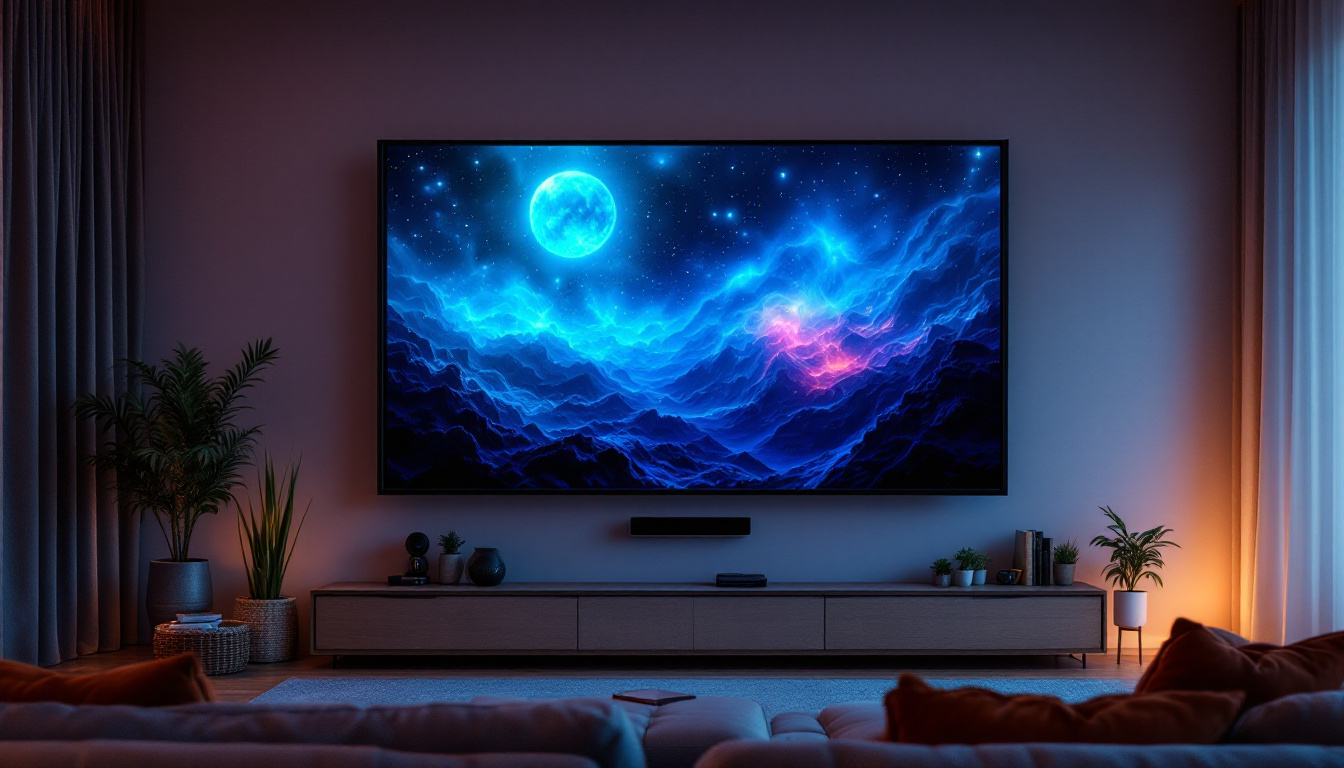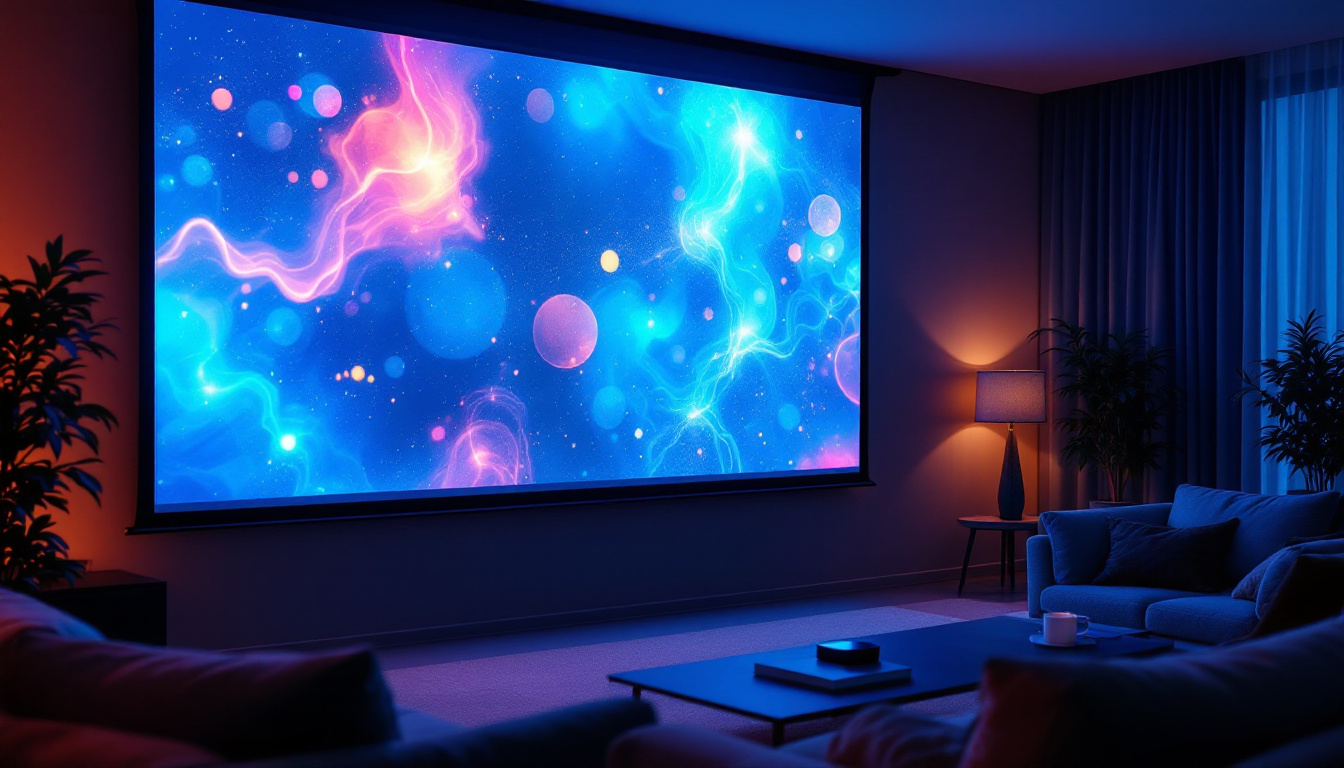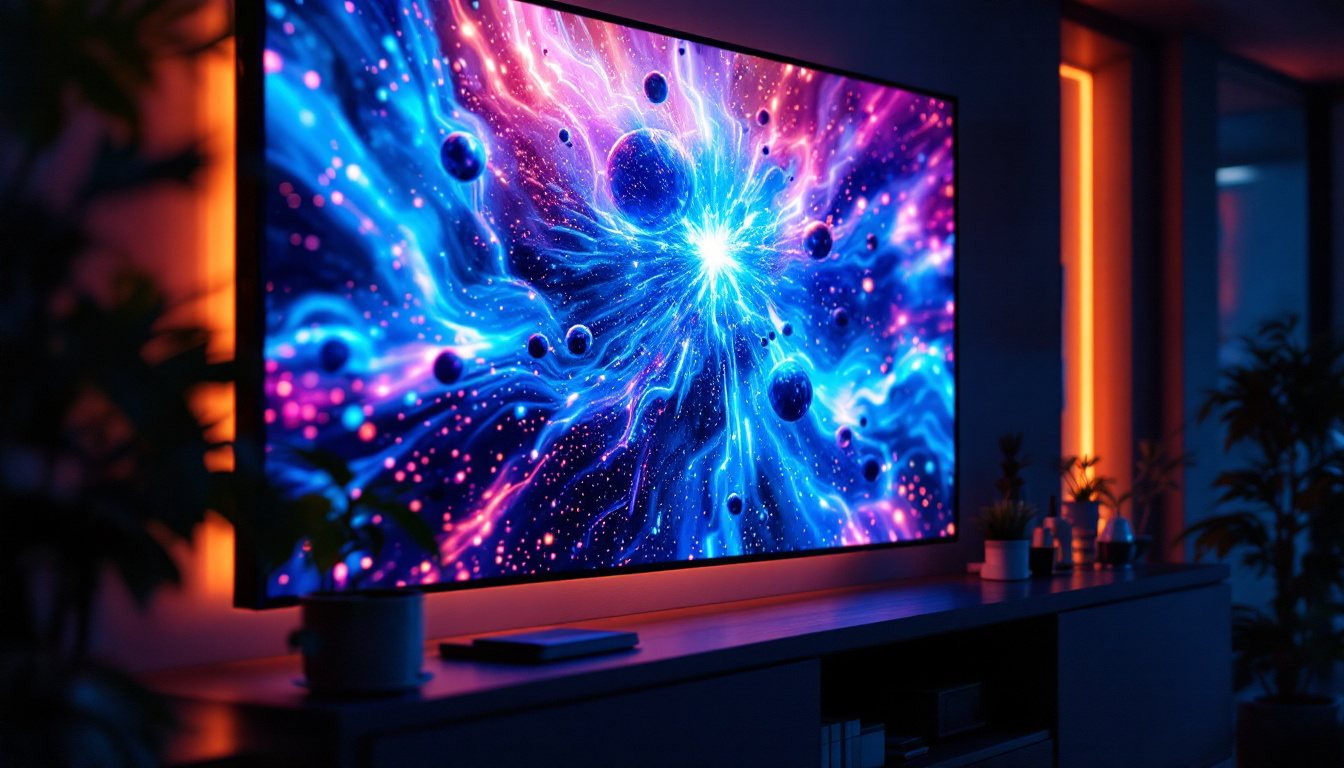In the world of television technology, the terms LCD and LED often create confusion among consumers. While both technologies are used to create stunning visual experiences, they have distinct characteristics that set them apart. This article aims to clarify the differences between LCD and LED displays, delve into how LED technology enhances LCD TVs, and explore the benefits and drawbacks of these popular display types.
Understanding LCD Technology
LCD, or Liquid Crystal Display, is a flat-panel display technology that has been widely adopted in televisions since the early 2000s. It utilizes liquid crystals sandwiched between two layers of glass or plastic. When an electric current passes through these crystals, they align in a way that allows light to pass through or be blocked, creating images on the screen.
The Basics of LCD Operation
At its core, an LCD screen consists of several key components: the liquid crystal layer, polarizers, and a backlight. The backlight is crucial because it provides the illumination needed for the display to be visible. Traditionally, LCDs used cold cathode fluorescent lamps (CCFLs) for backlighting, but advancements in technology have led to the adoption of LED backlights. LED backlighting not only enhances brightness and energy efficiency but also allows for thinner designs and improved color reproduction, giving manufacturers more flexibility in creating visually appealing products.
The use of liquid crystals allows for a thinner profile compared to older CRT (cathode-ray tube) televisions. This has made LCD TVs a popular choice for consumers looking for sleek, modern designs. However, the quality of the image produced by an LCD can vary significantly based on the type of backlighting used and the quality of the panel itself. Additionally, the advancements in LCD technology have led to features such as high dynamic range (HDR) and 4K resolution, which further enhance the viewing experience by providing more vibrant colors and greater detail.
Types of LCD Panels
There are several types of LCD panels, each with its own strengths and weaknesses. The most common types include Twisted Nematic (TN), In-Plane Switching (IPS), and Vertical Alignment (VA). TN panels are known for their fast response times and are often favored by gamers. IPS panels, on the other hand, provide better color accuracy and wider viewing angles, making them ideal for watching movies or sharing content with friends. VA panels offer deep blacks and good contrast ratios but may suffer from slower response times. Furthermore, the choice of panel type can significantly influence not only the visual performance but also the overall user experience, particularly in applications like graphic design or professional video editing, where color fidelity is paramount.
In addition to these common types, there are also variations such as Advanced Fringe Field Switching (AFFS) and Super In-Plane Switching (S-IPS), which aim to combine the best features of existing technologies. These advanced panels often provide even better color reproduction and viewing angles, catering to niche markets and high-end applications. As technology continues to evolve, researchers are exploring new materials and methods to enhance LCD performance, including the integration of quantum dots and organic light-emitting diodes (OLED) to push the boundaries of display quality even further.
LED Backlighting: A Game Changer
LED backlighting has revolutionized the LCD television market. Unlike traditional CCFLs, LED (Light Emitting Diode) backlighting offers several advantages, including improved energy efficiency, enhanced brightness, and better color accuracy. LED technology can be categorized into two main types: edge-lit and full-array.
Edge-Lit vs. Full-Array LED
Edge-lit LED TVs have LEDs positioned along the edges of the screen, which allows for a thinner design. This configuration is effective for creating bright images but can sometimes lead to uneven lighting and poor black levels. In contrast, full-array LED TVs feature a grid of LEDs behind the entire screen, allowing for more uniform brightness and better control over local dimming. This results in deeper blacks and enhanced contrast ratios, making full-array LED displays a preferred choice for many enthusiasts.
Benefits of LED Backlighting
The advantages of LED backlighting extend beyond just improved picture quality. LED TVs consume less energy than their CCFL counterparts, which can lead to significant savings on electricity bills over time. Additionally, the longer lifespan of LED technology means that consumers can expect their televisions to last longer before needing replacement.
Moreover, LED backlighting contributes to a more environmentally friendly option in the realm of electronics. With reduced energy consumption, these televisions not only lower the carbon footprint associated with their use but also help in minimizing the overall demand for energy production. Furthermore, many manufacturers are now incorporating sustainable practices in the production of LED TVs, such as using recyclable materials and reducing hazardous substances, making them a more responsible choice for eco-conscious consumers.
Another noteworthy aspect of LED backlighting is its adaptability to various viewing environments. Whether in a brightly lit room or a darkened home theater, LED technology can adjust to provide optimal viewing experiences. advanced features like HDR (High Dynamic Range) enhance the capabilities of LED backlighting by allowing for a wider range of colors and brightness levels, which brings out the finer details in both shadows and highlights. This adaptability not only enhances the viewing experience but also makes LED TVs suitable for a diverse array of content, from movies and sports to video games.
Comparing LCD and LED TVs
While LED backlighting enhances LCD technology, it is essential to understand that LED TVs are essentially a subset of LCD TVs. Therefore, comparing them involves looking at various aspects, including picture quality, energy efficiency, and price.
Picture Quality
When it comes to picture quality, LED TVs generally outperform traditional LCDs with CCFL backlighting. The improved brightness and contrast ratios offered by LED technology contribute to a more vibrant viewing experience. Full-array LED TVs, in particular, excel in producing deep blacks and vivid colors, making them suitable for watching movies in dark environments.
However, it is worth noting that not all LED TVs are created equal. Factors such as panel type, resolution, and processing technology can significantly impact the overall picture quality. Consumers should consider these elements when making a decision. For instance, OLED technology, which is often compared to LED, offers even better contrast and color accuracy due to its ability to turn off individual pixels. This results in an unparalleled viewing experience, especially for those who prioritize cinematic quality in their home entertainment systems.
Energy Efficiency
Energy efficiency is another area where LED TVs shine. The use of LED backlighting allows these televisions to consume less power compared to older LCD models. This not only benefits the environment but also results in lower electricity bills for consumers. Many LED TVs also come with energy-saving modes that further optimize power consumption. Additionally, the longevity of LED technology means that these TVs often have a longer lifespan, reducing the need for frequent replacements and contributing to less electronic waste.
Price Considerations
Price is often a critical factor when choosing a television. Generally, LED TVs tend to be more expensive than traditional LCDs due to the advanced technology involved in their manufacturing. However, the price gap has been narrowing as LED technology becomes more mainstream. Consumers can now find a range of options that fit various budgets, from entry-level models to high-end displays. Moreover, seasonal sales and discounts can make high-quality LED TVs more accessible, allowing consumers to take advantage of the latest advancements without breaking the bank. It’s also worth considering the long-term value of investing in a more expensive model, as the enhanced features and durability can lead to a more satisfying viewing experience over time.
The Future of LCD and LED Technology
As technology continues to evolve, the future of LCD and LED displays looks promising. Manufacturers are constantly working on improving picture quality, energy efficiency, and overall performance. Innovations such as quantum dot technology and mini-LED backlighting are already making waves in the industry, offering even better color accuracy and contrast.
Quantum Dot Technology
Quantum dot technology enhances the color reproduction of LED TVs by using tiny semiconductor particles that emit specific colors when illuminated by a light source. This results in a broader color spectrum and more vibrant images. Many high-end LED TVs now incorporate quantum dot technology, providing consumers with an even more immersive viewing experience.
Mini-LED Backlighting
Mini-LED backlighting is another exciting development that promises to take LED technology to the next level. By using smaller LEDs, manufacturers can pack more of them into the display, allowing for finer control over local dimming and improved contrast. This technology aims to bridge the gap between traditional LED displays and OLED technology, which is known for its exceptional black levels and color accuracy.
Conclusion
In summary, understanding the differences between LCD and LED technology is crucial for making an informed purchasing decision. While LED displays are a type of LCD that utilizes advanced backlighting technology, they offer significant advantages in terms of picture quality, energy efficiency, and design. As technology continues to advance, consumers can expect even better performance from their televisions, making the viewing experience more enjoyable than ever before.
Whether one opts for an LED TV or a traditional LCD model, it is essential to consider factors such as panel type, resolution, and additional features. By doing so, consumers can find the perfect television that meets their needs and enhances their entertainment experience.
Discover LumenMatrix’s Advanced LED Display Solutions
Ready to elevate your viewing experience with the latest in LED display technology? Look no further than LumenMatrix, a pioneer in crafting visually stunning and innovative LED display modules. From captivating Indoor LED Walls to dynamic Outdoor LED Displays, and from versatile Vehicle LED Displays to sleek LED Poster Displays, LumenMatrix offers a comprehensive range of solutions tailored to your needs. Embrace the future of visual communication with our LED Sports Displays, immersive Floor LED Displays, and the revolutionary All-in-One LED Display. Experience transparency like never before with our LED Transparent Display. Each product is designed to enhance engagement and ensure your message is delivered with impact. Check out LumenMatrix LED Display Solutions today and transform how you share your message with the world.































